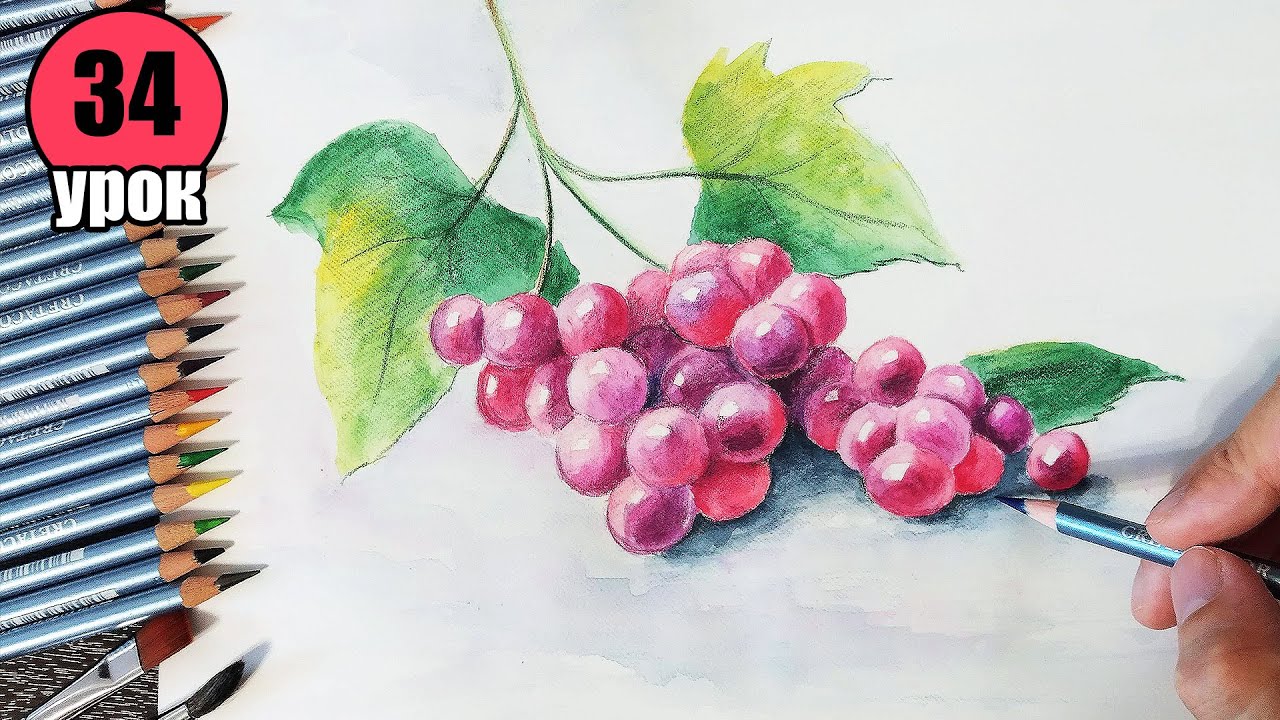
How to use watercolor pencils correctly?
Content
Watercolor crayons combine the precision of pencils with the delicacy of water-based paints. What to look for when buying the first set? How to use them correctly to use the full potential of watercolor pencils? Check out my guide!
Barbara Mikhalska / ElfikTV
What are watercolor pencils? How are they different from pencils?
Whether you are looking for a set of colored crayons for your child to start school or to develop their own artistic passion, you are sure to appreciate the possibilities offered by watercolor crayons. At first glance, they look like ordinary pencils. Their difference is in the interior: colored graphite in them is permeable. This means that after contact with water (the pointed tip gets wet in it), the drawn line smears like watercolors. Hence the second name of these artistic instruments - water crayons. All this thanks to the wet pigment, similar to that used in the aforementioned paints.
Can't draw without water? Absolutely not! You can use this type of crayon both dry and wet. In the first version, they will be colored in the same way as the pencil models; with the difference that the line will be more expressive (due to the natural humidity of the graphite). So you can use both methods in the same drawing.
What kind of work are water crayons suitable for?
This type of chalk is widely used in art. Art is a limitless field - surely every artist has their own original way of using watercolor crayons. At the very beginning, to test their capabilities, you can use them, for example, during:
- a sketch of a drawing that will be filled with paints (dry),
- filling of small working elements (dry),
- completion of small elements of the work, painted with watercolors (wet),
- painting with a brush: it is enough to pick up the pigment from the moistened cartridge with the tip or remove the pigment and mix it with a little water,
- dry drawing and wet background filling.
What watercolor pencils to choose?
Choosing your first paint kit is always an exciting moment; without testing, you don't know what to expect. However, in the case of crayons, it is worth remembering that stores very often offer to play with "testers" - similar to pens. But how does the user know that this particular set is of good quality?
Watercolor crayons should be soft (compared to pencil crayons) and fairly brittle. They will also be distinguished by an intense pigment of good quality; colors (after dry use) should be really expressive. Among the recommended brands, Koh-I-Noor and Faber-Castell stand out the most. Both are available in many packaging options, from a dozen to even over 70 colors. At the very beginning, choose a smaller set of colors - to use them for several jobs and test how well you will work with watercolor crayons.
The choice of paper is also important. We will be working with water, so let's choose one that can handle it. I usually choose cards weighing at least 120g/m2. This time I used the block that was in the CREADU set. It has a nice texture and a slightly creamy color, which is very suitable for the topic of today's picture.
I applied the first layers of color with my dry watercolor pencils, and then smeared them with a brush dipped in water. I started with very light shades and waited for them to dry, then applied the same method to other, darker ones.
How to draw with watercolor pencils? Details
I added details in a completely different way. I picked up the pigment with a slightly damp brush directly from the tip of the water chalk and from the palette that I made on the side of the drawing. This can be done on a separate sheet of paper, but I think leaving the sampler next to it looks very interesting and allows you to control the color matching. Colors applied this way are more concentrated and details are more precise.
How to draw with watercolor pencils? Basic Rules
As I mentioned, water crayons can of course be used in the classic way, just like you can use traditional crayons. However, it is worth remembering that they are much softer and crumble more easily, because their pigment is soluble. Even the smallest details and fragments of a picture, blurry or rough, such as clouds or sand, can be drawn dry.
The rules for using watercolor crayons are similar to the rules for using watercolor paints. This means that you should try to avoid black when drawing shadows, and instead use, for example, a blue palette.
Watercolor crayons also allow for a lot of tricks. For example, try wetting a piece of paper and running a pencil across the wet surface to see the result. Or vice versa: dip its tip into the water for a few seconds and draw something with it on a dry sheet of paper. The effect can be useful for painting plants or water.
Or maybe you will find other ways to use this amazing tool?
